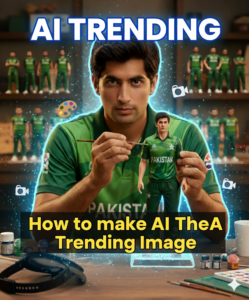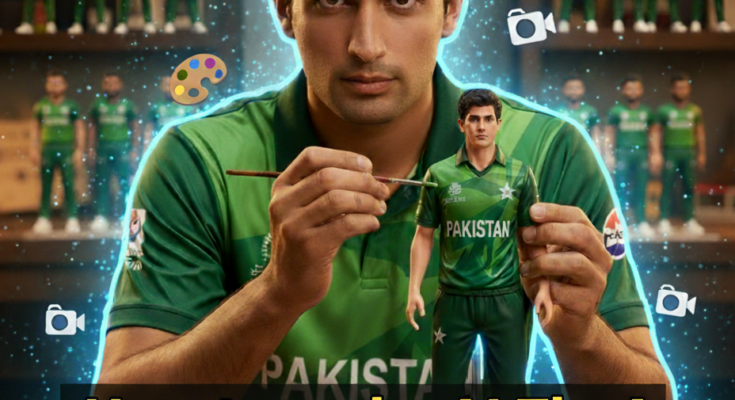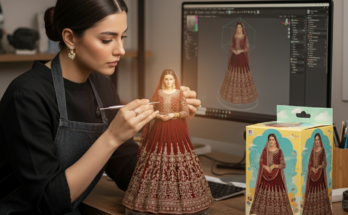AI Trending: The Creation of AI-Generated Images: A Comprehensive Exploration
In recent years, artificial intelligence (AI) has revolutionized countless industries, from healthcare and finance to entertainment and education. Among the most striking advancements is the creation of AI-generated images. Once a concept confined to science fiction, AI can now produce realistic photographs, imaginative artworks, and detailed illustrations with remarkable precision. This technology has not only redefined artistic boundaries but has also opened doors to new opportunities while raising ethical, social, and cultural debates.
This article explores the creation of AI-generated images in depth—covering the underlying technologies, step-by-step processes, applications, challenges, and the future potential of this rapidly evolving innovation.
Understanding AI-Generated Images
AI-generated images are visual outputs produced by algorithms and machine learning models trained on massive datasets of existing images. Instead of relying on human artists or photographers, AI systems learn patterns, shapes, textures, and styles from data to create new and original images. These images can be hyper-realistic, resembling professional photographs, or they can take the form of abstract, surreal, or stylized art.
At the heart of AI-generated images lies deep learning, a subfield of machine learning that uses artificial neural networks inspired by the human brain. Through millions—or even billions—of parameters, AI models recognize the relationship between pixels, colors, and structures in images, allowing them to reproduce or generate entirely new visuals.

The Technologies Behind AI Image Creation
Several advanced AI techniques drive the creation of images, with the following being the most prominent:
-
Generative Adversarial Networks (GANs)
Introduced by Ian Goodfellow in 2014, GANs are among the most influential breakthroughs in AI art. They consist of two neural networks:-
The Generator, which creates new images from random noise.
-
The Discriminator, which evaluates whether an image is real (from the dataset) or fake (from the generator).
Through repeated training, the generator improves until it produces images so realistic that even the discriminator struggles to distinguish them.
-
-
Variational Autoencoders (VAEs)
VAEs compress data into a latent space and then reconstruct it, enabling them to generate new images that share characteristics with the training data. Though less sharp than GANs, VAEs are useful in creating smooth transitions between images and exploring creative variations. -
Diffusion Models
Diffusion models, such as those powering tools like Stable Diffusion and DALL·E 2, work by gradually adding noise to an image and then learning to reverse this process. By starting with random noise and progressively denoising it, these models can generate highly detailed and diverse images from textual descriptions. -
Neural Style Transfer
This technique allows AI to combine the content of one image with the artistic style of another. For instance, a photograph of a city skyline can be reimagined in the style of Van Gogh’s Starry Night.
The Process of Creating AI Images
The creation of AI images typically follows a systematic process:
-
Data Collection and Preparation
AI models require vast datasets of images—often scraped from the internet, digital libraries, or curated collections. These datasets include millions of labeled images representing objects, people, environments, and artistic styles. -
Model Training
The AI system undergoes extensive training on these datasets. For example, GANs use the generator and discriminator framework to learn how to produce convincing images, while diffusion models train to reverse noise patterns. -
Input Prompt or Seed Data
Once trained, users can guide the AI by providing input. This may be a text prompt (e.g., “a futuristic city at sunset”), an initial sketch, or random noise used as a seed. -
Image Generation
The AI processes the input and produces one or more images. Depending on the model, this can happen in seconds or minutes, and the results often surprise users with their creativity and detail. -
Refinement and Iteration
Users can refine outputs by adjusting prompts, applying filters, or retraining models with additional data. This iterative process ensures that the generated images align with the desired vision.
Applications of AI-Generated Images
The ability of AI to create high-quality images has countless practical applications:
-
Art and Design
Artists use AI as a collaborative tool to explore new styles, generate ideas, or even co-create entire works of art. Designers employ AI for logos, concept art, and product mock-ups. -
Entertainment and Media
In gaming, AI generates characters, landscapes, and textures. Filmmakers use AI for special effects, storyboarding, or creating environments that would otherwise be costly to produce. -
Advertising and Marketing
Brands leverage AI to generate unique visuals for campaigns, reducing dependence on stock photography and enabling personalized content for consumers. -
Fashion and E-Commerce
AI creates clothing designs, virtual try-ons, and product mock-ups, revolutionizing how consumers shop and interact with fashion brands. -
Education and Research
Scientists use AI to visualize concepts in medicine, biology, and physics. For example, AI can generate molecular structures or simulate environments. -
Personal Creativity
Everyday users engage with platforms like MidJourney, DALL·E, and Artbreeder to create personalized artwork, avatars, or imaginative illustrations.
Challenges and Ethical Considerations
While the creation of AI-generated images is impressive, it raises significant challenges:
-
Copyright and Ownership
Who owns an AI-generated image—the developer, the user, or the AI system itself? The legal framework surrounding AI art remains unclear. -
Bias in Training Data
AI models often reflect the biases present in their training data. For example, they may unintentionally reinforce stereotypes or exclude underrepresented cultures and styles. -
Misinformation and Deepfakes
AI-generated images can be used to create realistic but false representations of people or events. Deepfakes pose risks to privacy, reputation, and democratic institutions. -
Impact on Human Artists
Critics argue that AI threatens traditional art forms and devalues the labor of human artists. Others see it as a tool to enhance creativity rather than replace it. -
Energy Consumption
Training large AI models consumes significant computational resources, raising concerns about environmental sustainability.
The Future of AI Image Creation
Looking ahead, AI image generation will only become more advanced and accessible. Several trends are worth noting:
-
Integration with Other Modalities
Future models will integrate images with text, audio, and video, creating fully immersive multimedia experiences. -
Customization and Personalization
AI tools will allow individuals to generate highly personalized content—from avatars that reflect personal traits to tailored art pieces. -
Collaborative Art
Human-AI partnerships will evolve, with artists using AI not just as a tool but as a creative collaborator. -
Ethical Safeguards
New regulations, ethical guidelines, and watermarking systems will help mitigate the misuse of AI-generated images. -
Democratization of Creativity
As tools become user-friendly, anyone—regardless of artistic skill—can participate in creating stunning visuals.
Conclusion
The creation of AI-generated images is one of the most remarkable achievements of modern technology. It combines art, science, and imagination in ways that were once unimaginable. From GANs and diffusion models to style transfer techniques, AI has equipped humanity with tools that empower both professionals and amateurs to generate unique, high-quality visuals.
However, with this power comes responsibility. Ethical challenges such as copyright, bias, and deepfake misuse must be addressed to ensure AI benefits society as a whole. If guided wisely, AI image generation holds the potential not only to transform industries but also to democratize creativity and inspire a new era of human-machine collaboration.
In the end, AI-generated images are not simply products of algorithms—they are reflections of human curiosity, innovation, and our timeless desire to create.




